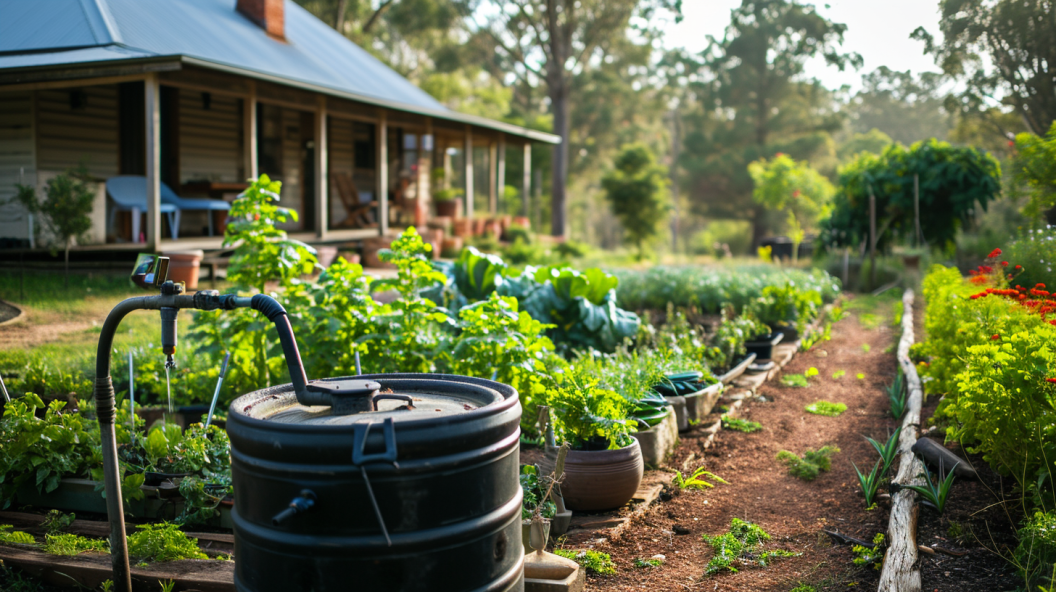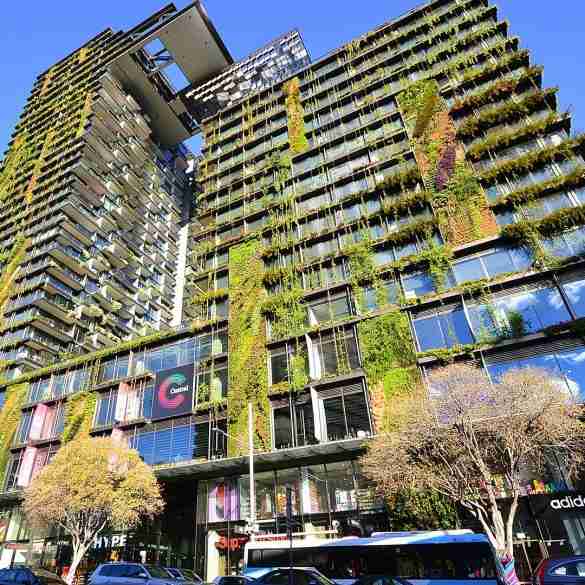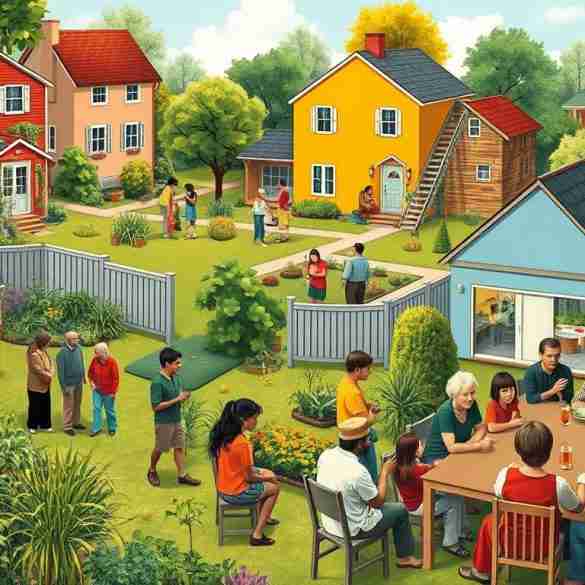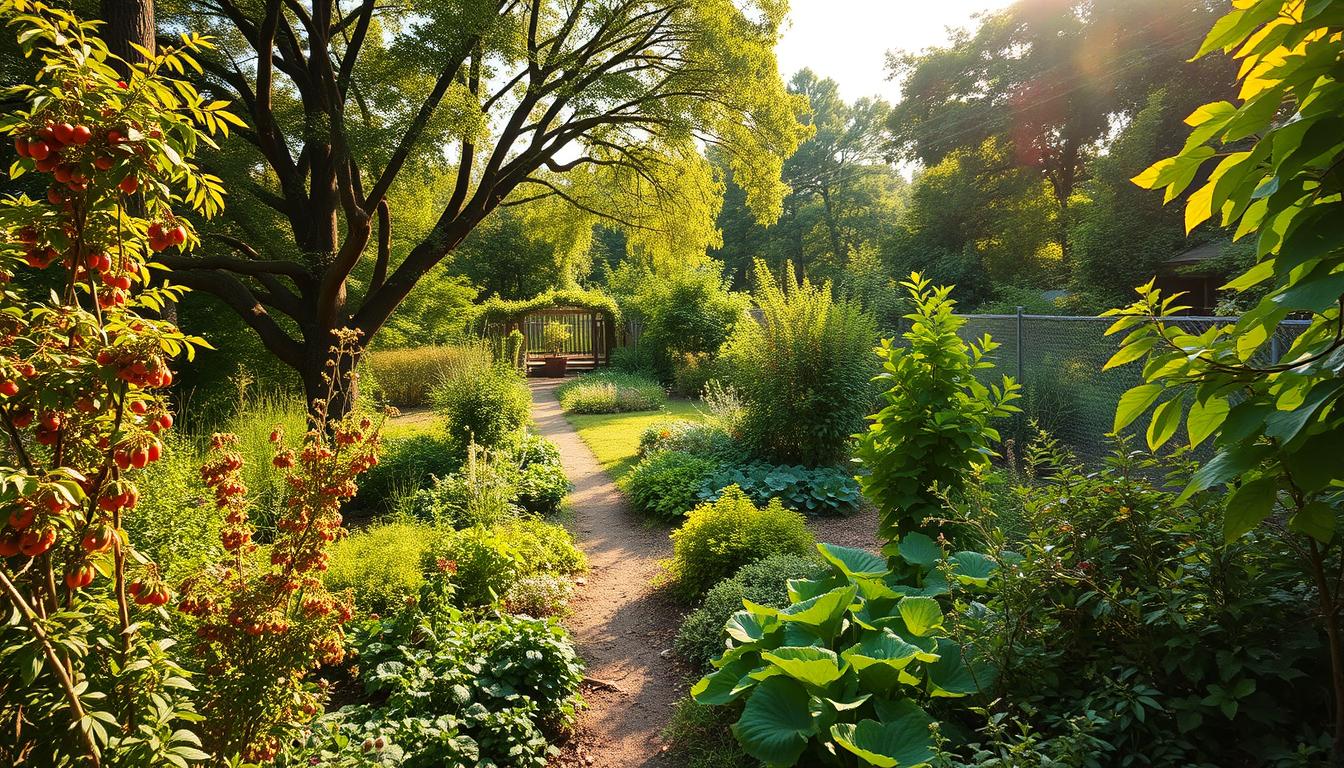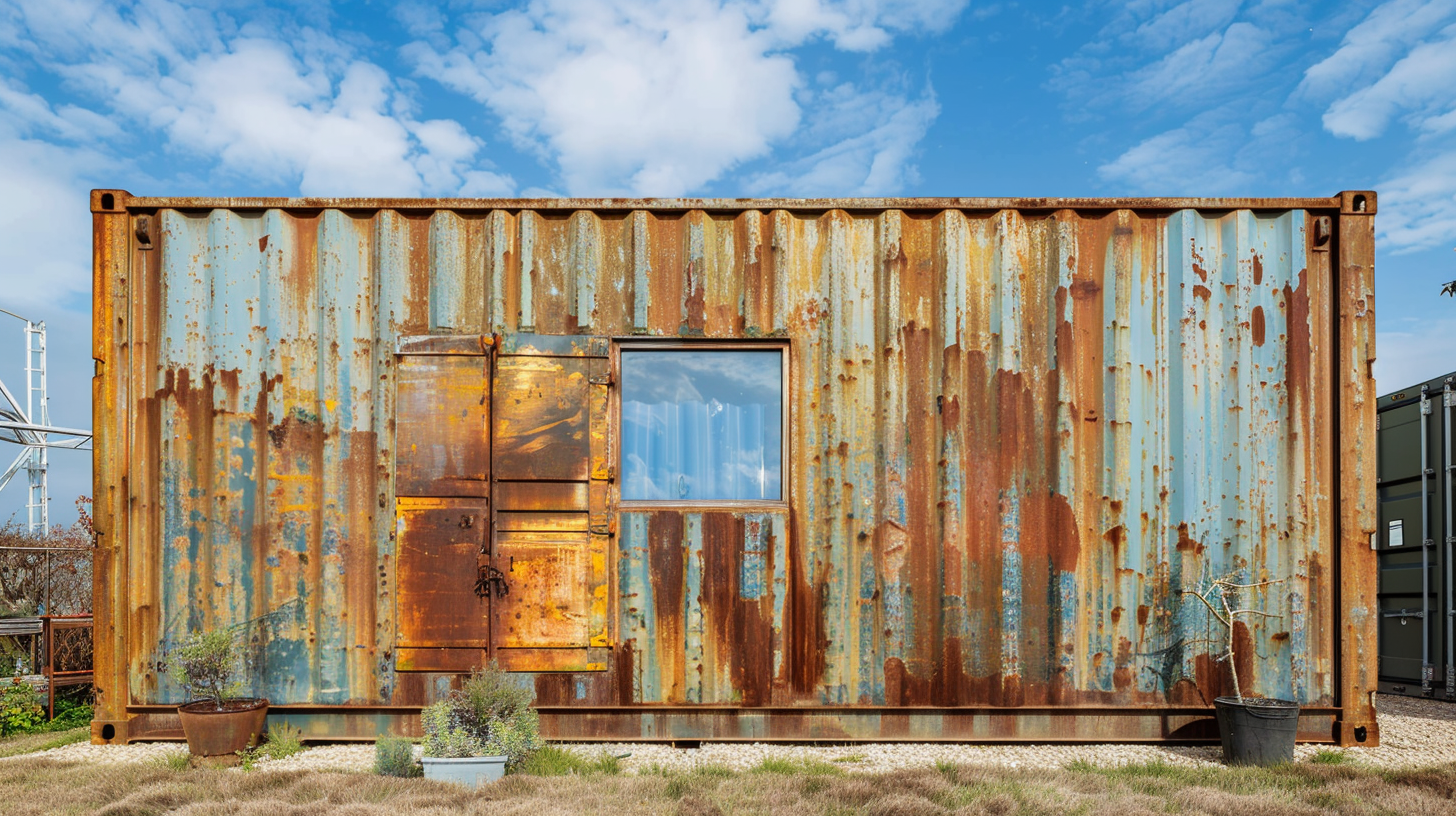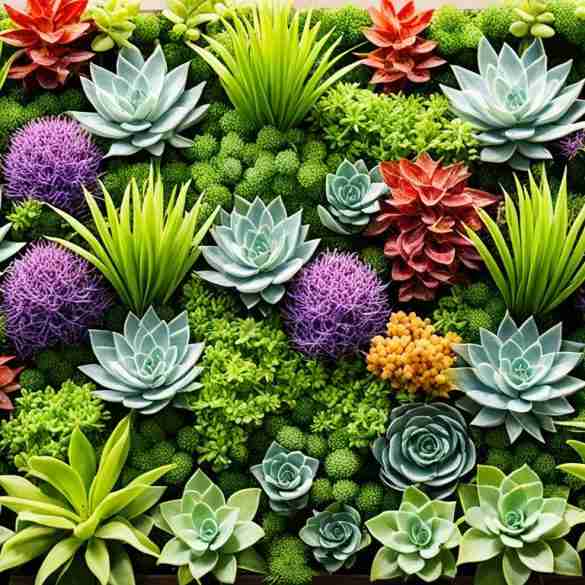An Australian sustainable home proves sustainable living isn’t just a global movement; it’s a path that has unique implications for you and your home right here in Australia. We’re delving into eco-conscious living tips that can transform your homestead into a model of efficiency and environmental harmony.
Imagine living in a space that breathes with nature, where green living tips aren’t just advice but a day-to-day reality. The current trends sweeping through the country aim to integrate elegance with sustainability, providing you with living solutions that are not just in sync with the environment but also with your well-being and pocket.
Key Takeaways for Australian Sustainable Homes
- Integrate eco-friendly practices to create a stylish yet sustainable living space.
- Adopting green living tips can lead to significant cost savings over time.
- Eco-conscious living tips pertain to both the interior and exterior of your home.
- Stay informed on the latest sustainable living trends for future-proof home improvements.
- Embark on a journey of reducing your carbon footprint through simple, effective changes.
- Design your living space with both comfort and environmental responsibility in mind.
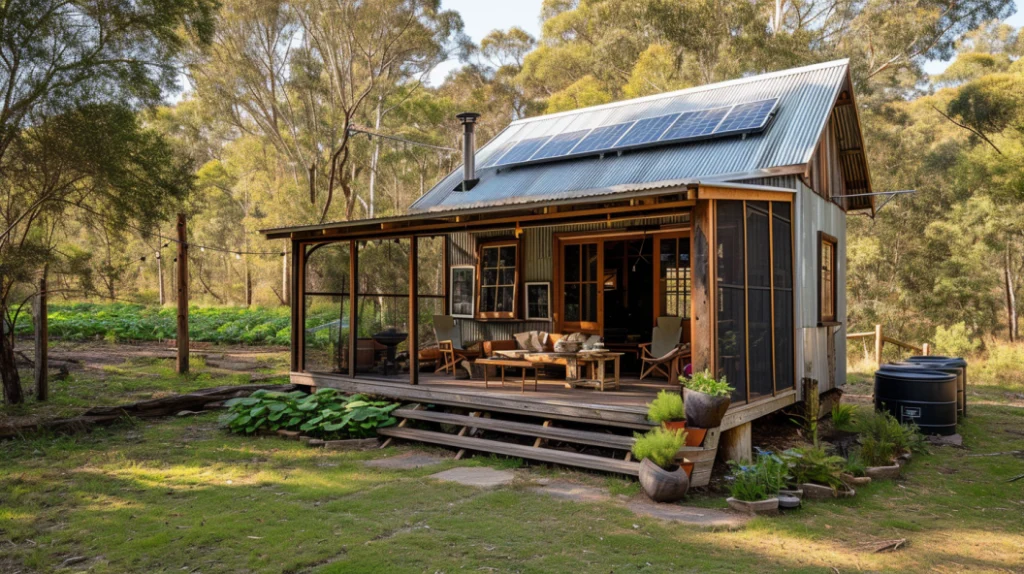
Embracing Passive Design in Your Australian Sustainable Home
Welcome to the enthralling world of passive design, where you, as a homeowner, can revel in the harmony of efficiency and comfort. With Australian sustainable home tips deeply rooted in PassivHaus principles, passive design is not just a trend but a lifestyle shift toward creating energy-efficient home ideas that serve both your wallet and the planet. Before exploring specific techniques, understand that passive design encapsulates the essence of using building layout, materials, and landscaping to leverage solar energy and natural ventilation to maintain a comfortable temperature range in the home.
Maximizing Natural Light and Climate Control
Imagine a home bathed in a soft glow of natural light, where every turn is a moment basking in the sun’s benevolence. This is the promise of passive design, smartly oriented building layouts that invite sunlight in during the winter while shunning the harsh heat during summer. The use of energy-efficient windows and strategic placement of shade elements are key to this enlightened approach. Solar heat gain through windows is not just about brightness; it’s a calculated choreography performed by the elements of your domicile.
Passive Cooling and Heating Techniques for Australian Sustainable Homes
With the delight that natural light brings, passive design also caters to the nuances of thermal comfort. Innovative cooling and heating strategies like thermal mass materials absorb and release heat, stabilizing interior temperatures organically. Insulation is not to be overlooked; it is the silent sentinel guarding against the whims of external temperatures. Awnings, too, cast their shade and pride, allowing air flows to cool homes naturally, negating the need for artificial air conditioning.
Below we’ve provided a table summarizing key sustainable features to consider when employing passive design strategies. These will guide you in enhancing your home’s energy efficiency through passive design:
| Feature | Function | Benefits |
|---|---|---|
| Solar-orientated layout | Maximizes daylight use and minimizes heat during the summer | Reduces lighting and cooling costs |
| Thermally efficient windows | Control solar heat gain and loss | Insulates against temperature extremes; lowers heating and cooling energy use |
| Thermal mass (e.g., concrete or brick) | Stores and releases heat | Maintains a stable indoor temperature, reducing reliance on heating and cooling systems |
| Natural ventilation | Uses wind and buoyancy-driven airflow | Improves air quality; reduces the need for mechanical cooling |
| Awnings and overhangs | Provides shade to cool the building | Lowers indoor temperatures and energy costs associated with air conditioning |
| High-quality insulation | Reduces heat transfer between the interior and exterior | Keeps homes comfortable year-round; slashes heating and cooling expenses |
By embracing passive design with open arms, you are not only investing in an Australian sustainable home but actively participating in a global movement towards a cleaner, greener future. Enable your living space to thrive in quiet alliance with the environment, all while exemplifying the quintessence of modern luxury and responsibility.
The Essence of Water Sustainability
As Australia contends with its dry landscapes, the importance of water sustainability practices in home living comes to the forefront. Embracing methods to conserve water isn’t just beneficial for the environment but also serves as a gateway to significant savings for your household. From improvements in daily water usage to investment in water collection systems, each step contributes to a more eco-friendly home.
Rainwater Harvesting Systems in Australian sustainable homes
In your quest for creating an environmentally friendly home, rainwater harvesting systems present a golden opportunity. Capturing rainwater for reuse in gardening, toilet flushing, and even laundry, can noticeably decrease your dependence on main water supplies. Such systems, often comprising tanks and filtration mechanisms, are instrumental in ensuring you have a backup water source during times of drought or water restrictions.
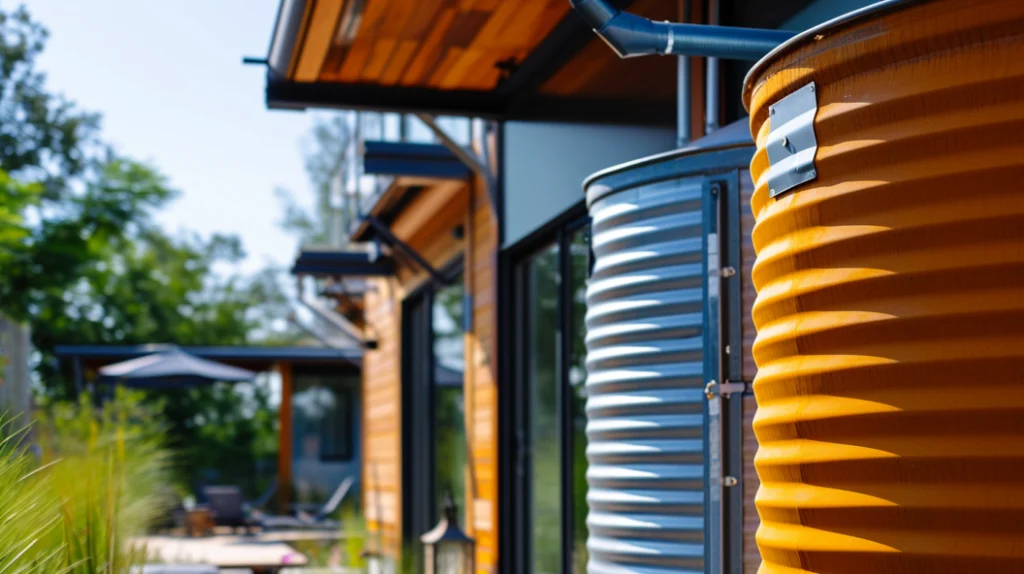
Efficient Water Fixtures and Appliances
Installing modern, efficient water fixtures and appliances is another vital stride toward water sustainability. By choosing products that conserve water, you can cut down on your usage without compromising convenience or functionality. Below is a table comparing standard and water-efficient fixtures to guide your selections.
| Fixture/Appliance | Standard | Water-Efficient |
|---|---|---|
| Toilets | 3.5-7 gallons per flush | 1.28 gallons per flush or less |
| Shower Heads | around 2.5 gallons per minute | 1.5 gallons per minute or less |
| Faucets | 2.2 gallons per minute | 1.5 gallons per minute or less |
| Dishwashers | 6 gallons per cycle | 4 gallons per cycle or less |
| Washing Machines | 23 gallons per cycle | 15 gallons per cycle or less |
By adopting these eco-friendly home tips, not only do you contribute to safeguarding one of the planet’s most precious resources, but you also set an example for sustainable living within your community.
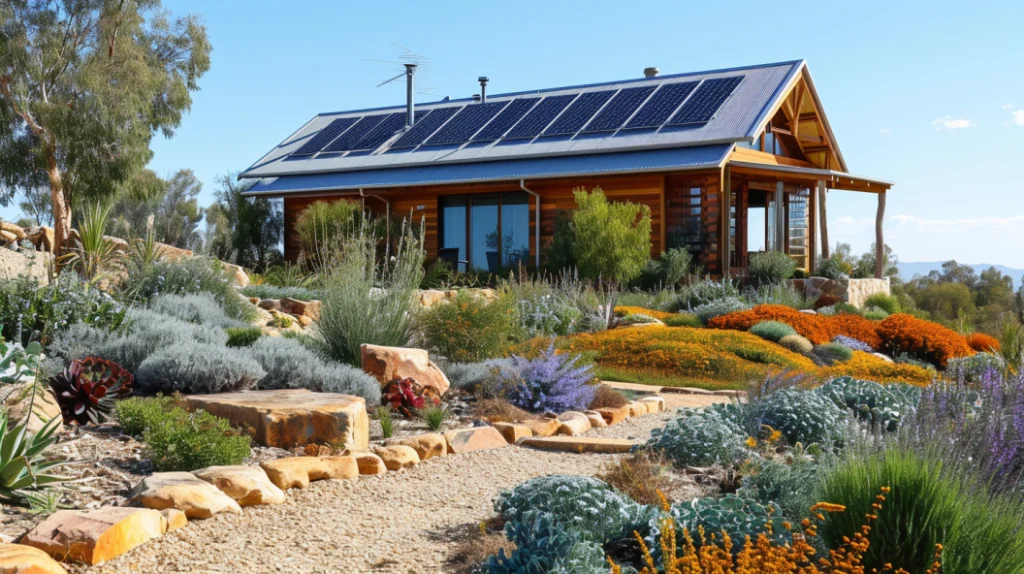
Renewable Energy: Solar Solutions and Beyond
As consciousness about sustainability grows, homeowners in Australia are turning to renewable energy sources to power their lives. The transition to solar power systems has become a cornerstone of green building tips, not only for their environmental impact but also for the long-term cost savings. Solar panels and wind turbines are empowering residents to break free from the conventional reliance on fossil fuels, ushering in an era of cleaner, more resilient energy options.
The benefits of solar energy systems extend beyond lower greenhouse gas emissions. They add value to your property and can significantly decrease your electricity bills. State incentives and decreasing installation costs are making solar options more feasible than ever. Perhaps one of the most significant strides in solar technology is the ability to integrate with the grid, allowing Australian sustainable homeowners to consume renewable energy, even when the sun isn’t shining.
For those considering a sustainable upgrade, here’s a quick comparison between traditional grid electricity and solar energy solutions:
| Traditional Grid Electricity | Solar Energy Solutions |
|---|---|
| Primarily powered by fossil fuels | Clean energy from the sun |
| Contributes to carbon emissions | Reduces carbon footprint |
| Variable energy costs | Reduction in electricity bills over time |
| Dependent on centralized sources | Power production at the point of use |
| Subject to outages and grid failures | Can be coupled with batteries for uninterrupted power supply |
Pairing renewable energy systems like solar power with other sustainable practices in your home not only contributes positively to the environment but also instills a sense of independence and economic stability. The sun’s abundant energy, once harnessed, can provide for many of your electricity needs, proving that the power to sustain a green future is quite literally within your grasp.
Looking ahead, the outlook for renewable energy is incredibly promising. As technology advances, you can expect further efficiency improvements and innovative solutions that will make harnessing renewable energy even more accessible for everyone.
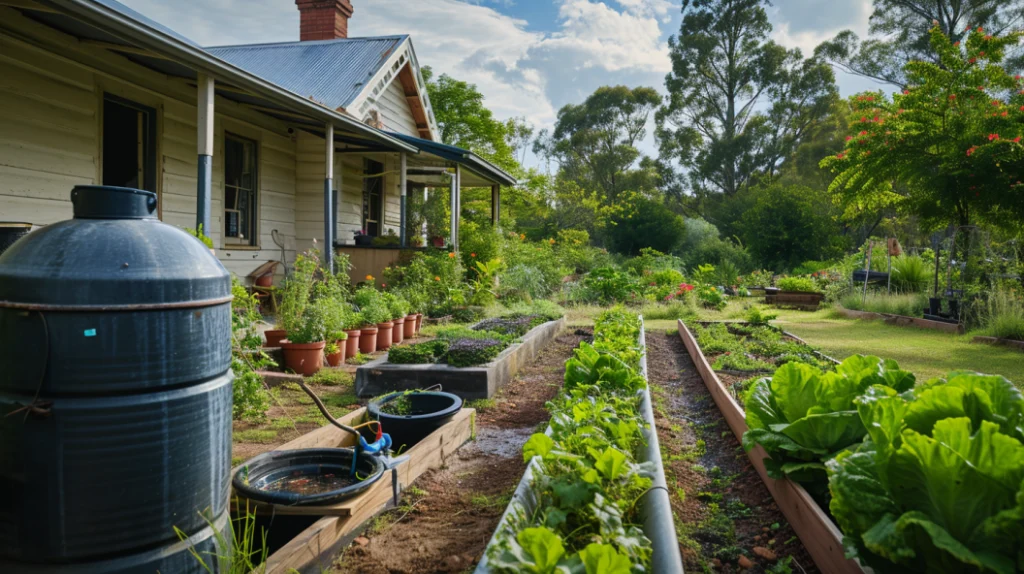
Integrating a Green Oasis Indoors and Outdoors
As you seek to infuse your living space with elements of nature, embracing green living tips can transform your Australian sustainable home into a sanctuary for both mind and body. Not only do these touches of greenery complement the eco-friendly decor, but they also enhance air quality and create a serene environment that nurtures well-being.
Indoor Air-Purifying Plants for Australian sustainable home
Plants are not merely decorative; they are natural air purifiers. Species like the snake plant, peace lily, and spider plant are known for their ability to absorb toxins and release oxygen, making them vital components of any sustainable home design. Integrating these green companions into your decor brings a slice of the outdoors in, embodying the essence of a living, breathing home.
Creative Green Roofing and Living Walls
For urban dwellings where space might be at a premium, innovative solutions such as green roofing and living walls offer a way to circumvent the constraints. These vertical gardens not only insulate and protect your abode, reducing energy costs but also bring biodiversity to urban environments. Imagine your lush oasis, contributing to your home’s sustainability and standing as a testament to modern eco-friendly decor trends.
- Consider integrating Succulents and ferns for low-maintenance living walls.
- Opt for native plants on green roofs to support local ecosystems.
- Use balcony planters to grow herbs and flowers, adding both beauty and utility.
Incorporating these natural elements into your home is more than just a style choice; it’s a commitment to cultivating an environment that supports your health and the health of the planet. Whether you start small with a collection of air-purifying plants or invest in a transformative green roofing installation, each step you take brings you closer to harmonizing with nature in your everyday life.

Blurring the Lines Between In-and-Outdoors
In pursuit of sustainable living ideas, many homeowners are reimagining the traditional boundaries of their living spaces to encourage an eco-conscious living environment. This architectural evolution is not only a nod to aesthetic ideals but also a practical approach to creating energy-efficient home ideas. By designing structures where the interior and exterior flow into one another, an open and organic home experience emerges.
Imagine stepping into a space where the walls and barriers that divide the garden and your living room seem to vanish, replaced by large, transparent expanses that invite natural light and views into your daily life. Such design choices not only enhance your sense of freedom but also minimize the need for artificial lighting and temperature control, thereby contributing to lower energy consumption and a closer connection with the natural world surrounding you.
Adapting your home to this ideal doesn’t require a complete overhaul. Sometimes, the addition of large, glass sliding doors or bi-fold doors can create that seamless integration you’re striving for, providing the perfect balance between comfort and sustainability. The following table exemplifies key features and considerations when aiming to blend your indoor and outdoor spaces harmoniously:
| Feature | Benefits | Considerations |
|---|---|---|
| Glass Sliding Doors | Uninterrupted views, natural light, easy transition between spaces | Thermal efficiency of glass, privacy options |
| Skylights | Additional illumination, sense of openness | Placement for optimal sunlight, potential for heat loss/gain |
| Indoor Plants | Improved air quality, connection to nature | Low-maintenance species, adequate sunlight |
| Outdoor Living Areas | Extended living space, increased home value | Durable materials, weather protection |
As we move forward, the blending of indoor and outdoor spaces is not just a trend, but a progressive step toward eco-conscious living tips that promote well-being and respect for the environment. The inspiration you gather from these concepts can invigorate your living experience and contribute to a more sustainable lifestyle. This is the essence of mindful living, where every design choice is an opportunity to nurture both personal serenity and ecological balance.
Sustainable Home Tips: Choosing Eco-Friendly Decor
As you envision a sustainable home design, it’s essential to infuse eco-friendly home tips into every corner, including your decor choices. Transforming your space with eco-conscious decor not only elevates its aesthetic but also its environmental footprint. This focus on sustainability is not just a trendy hashtag—it’s a substantial commitment to the planet and future generations.
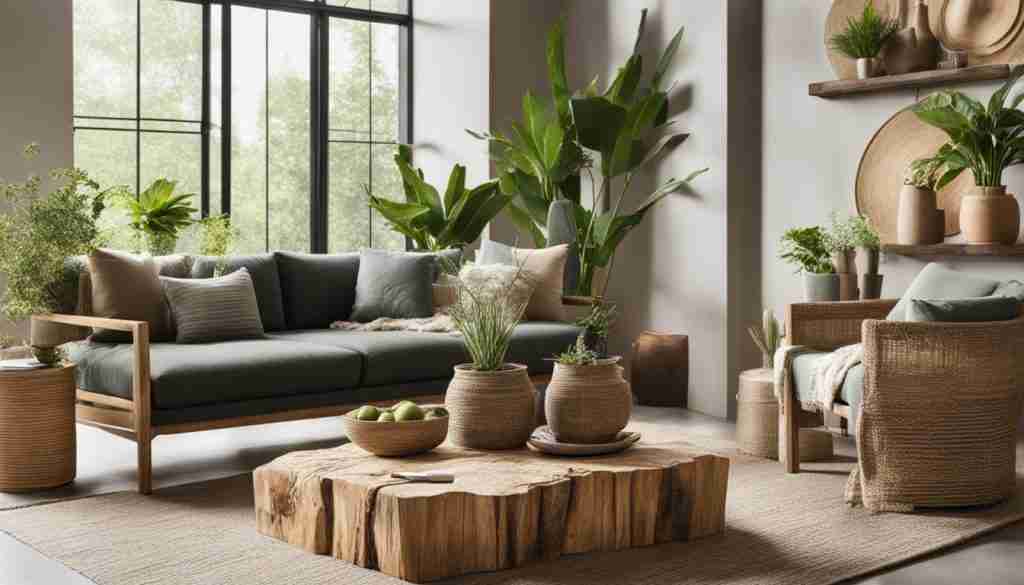
Opting for materials such as bamboo and reclaimed wood isn’t just stylish; it’s a nod toward durability and renewability. These materials can introduce a warm, organic feel to your home while being kind to the earth. Furthermore, decorating with these elements can create an unspoken narrative of your dedication to environmental stewardship through intentional living.
- Choose decor made from recycled or sustainable materials
- Integrate live plants to enhance air quality
- Consider bamboo flooring or furniture for its rapid renewability
- Repurpose old items to give them new life in your home
| Eco-Friendly Material | Benefits | Maintenance |
|---|---|---|
| Bamboo | Varies depending on the finish | Easy to clean and durable |
| Reclaimed Wood | Reduces deforestation and waste | Varies depending on finish |
| Cork | Biodegradable and recyclable | Naturally antimicrobial |
| Recycled Glass | Reduces landfill use and low energy to repurpose | Easy to clean and durable |
To create a truly sustainable home, it’s important to evaluate not just the aesthetics of your decor, but the story behind each piece. Is it locally crafted? Does it support ethical labor practices? Is it made of non-toxic materials? Answering these questions positively can enhance the sanctity of your sustainable home design.
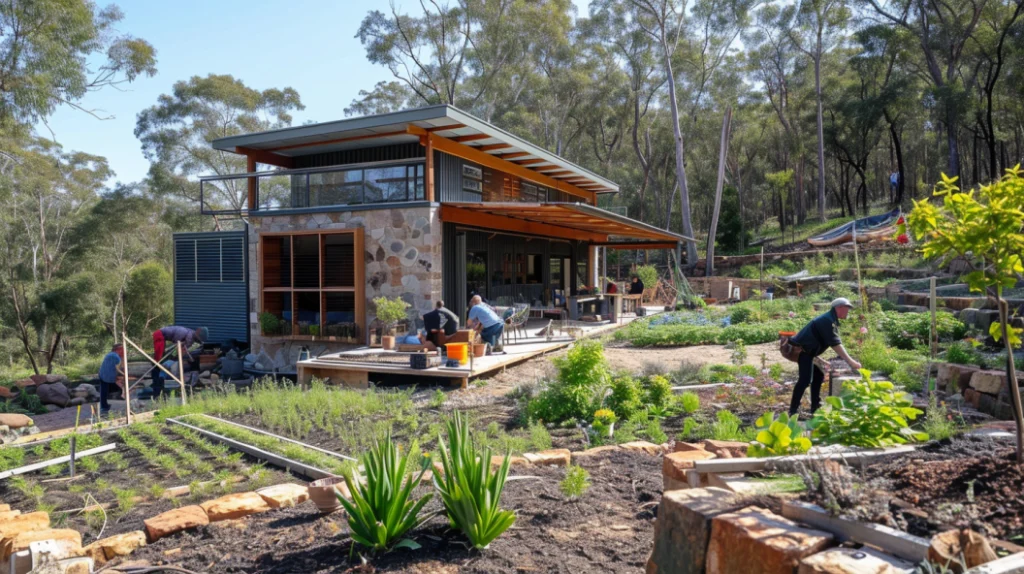
Advances in Energy-Efficient Australian Sustainable Home Designs
As we delve deeper into the realm of sustainable living ideas, it’s clear that building an energy-efficient home is no longer a choice but a necessity. Innovations in home construction and design are setting new standards for efficiency and sustainability, ensuring that your living space not only supports the environment but also caters to modern comfort demands. Let’s explore some of these advancements that are shaping the future of sustainable home design.
High-Performance Windows and Insulation
One transformative aspect of an energy-efficient home lies within the very panes of glass that offer us a view of the outside world. High-performance windows featuring double glazing, advanced coatings, and innovative frames significantly reduce energy loss. These windows are designed to keep the heat out during summer and trap warmth during winter, effectively slashing your heating and cooling costs and bolstering your home’s sustainability credentials.
Energy-Efficient Appliances and Lighting
The quest for an energy-efficient household doesn’t end with structural design; it extends to the very appliances and lighting you use daily. Swapping out older, energy-hungry models for ENERGY STAR® certified appliances can lead to considerable energy savings. Moreover, the transition from traditional incandescent bulbs to LED lighting transforms the energy profile of your home, offering longer-lasting and cooler lighting solutions that are kinder to both your pocketbook and the planet.
By embracing these advancements in energy-efficient home ideas, you not only contribute to the well-being of the environment but also invest in a home that promises longevity, reduced operational costs, and an enhanced lifestyle in line with the principles of sustainable living.
Eco-Conscious Construction Techniques
As advocacy for the planet becomes more integrated into our daily lives, the construction industry is not lagging. Employing eco-conscious living tips while erecting structures can significantly reduce the environmental footprint of building projects. Before diving into the specific techniques that make construction more sustainable, let’s consider how these practices are not just good for the earth but advantageous for you as well.
Recycling and Reusing Materials on Site for an Australian sustainable home
The mantra “reduce, reuse, recycle” has found a substantial niche in construction sites aiming for green building tips. The goal is to diminish the stream of waste heading to landfills — a significant challenge in the industry. This is achieved by recycling materials like concrete, which can be repurposed as aggregate or base material for new construction, and reusing materials directly on-site to limit transportation costs and pollution.
Environmentally Friendly Building Processes
Echoing the principles of sustainability, builders are adopting more environmentally friendly processes. This means paying close attention to the lifecycle of sustainable materials being used and their potential for reuse or recycling at the end of their service life. It also involves streamlining construction practices to reduce energy consumption and selecting products that have been sourced with minimal impact on the environment. Through collaborative efforts, even residual impacts are offset by strategies such as tree planting, contributing significantly to carbon sequestration.

- Optimal Material Selection: Choose materials with lower environmental impact.
- Efficient Use of Resources: Plan construction to minimize waste.
- Deconstruction instead of Demolition: Dismantle buildings to reclaim materials.
- Locally-Sourced Materials: Reduce emissions from transportation.
- Energy-Efficient Equipment: Use tools that consume less power.
Below, a summarized tabulation of eco-friendly materials highlights the advantages of each, reinforcing the notion that green building is not only about saving the planet but also about efficiency and economics.
| Material | Properties | Environmental Benefit | Cost-Effectiveness |
|---|---|---|---|
| Bamboo | Highly renewable, strong | Low ecological footprint | Less expensive than traditional hardwoods |
| Recycled Steel | Reduces need for new steel production | Conserves energy and resources | Competitive pricing with virgin steel |
| Cork | Reduces the need for new steel production | Harvested without harming the tree | Cuts heating and cooling costs |
| Low-E Windows | Improves thermal efficiency of buildings | Reduces energy consumption | Savings on energy bills outweigh initial costs |
| Recycled Plastic | A natural insulator, resilient | Diverts plastic from the waste stream | Reduces long-term repair and replacement costs |
As seen in Sustainable Home Magazine, the adoption of these techniques is not just for those with a green thumb or nature lovers — it’s a feasible path for anyone building in today’s world. With a little knowledge and responsibility, we can all contribute to a more sustainable future. Remember, the choices made at the construction site echo beyond its borders, playing a pivotal role in the health of our planet.
Sustainable Materials: The Foundation of Green Building
As you consider green living tips, it’s vital to recognize that Australian sustainable home materials are not just an environmentally friendly home tip, they are the bedrock upon which green building is established. These materials span from recyclables to rapidly renewable; from timbers to high-performance insulation, they form a core philosophy of durability and frugal resource utilization in construction.
Explore Recyclable and Certified Materials
When building or renovating your Australian sustainable home, choosing the right materials is crucial for lessening your ecological footprint. The market today offers a plethora of options, such as recyclable timbers, which have been salvaged or certified by recognized eco-friendly organizations. Not only do these resources bring environmental benefits, but they also promise an aesthetic appeal rooted in nature.
Benefits of Using Sustainable Resources
Opting for sustainable materials is more than an ethical decision; it also ensures the long-term sustainability of your home. With increased durability comes less frequent repairs and maintenance, a win for both the environment and your wallet. Thus, these materials can be seen as a strategic investment towards fostering a healthier, greener future.
| Sustainable Material | Key Benefits | Recommended Use |
|---|---|---|
| Bamboo Flooring | Fast renewable, durable | Flooring, paneling |
| Recycled Steel | Reduces waste, energy-efficient production | Structural frames, roofing |
| Thermal Insulation | Energy-saving, enhances indoor comfort | Walls, roofs, foundations |
| Low-E Windows | Improves energy efficiency, controls heat flow | Exterior windows |
Keep these insights from Sustainable Home Magazine in mind as you embark on the rewarding journey of creating or upgrading to an environmentally responsible dwelling—a place that not only shelters but also sustains.
Pioneering Features in Australian Sustainable Home Designs
As you explore the dynamic world of sustainable home design, you’ll discover innovative features that mirror your commitment to eco-friendly living. Pioneering aspects like solar energy systems are not just trendy; they’re central to harnessing clean energy for your everyday use. Let’s delve into how these technologies and design concepts can transform your abode into an energy-efficient home.

Embracing passive solar design is a smart strategy to maintain a comfortable temperature throughout the year while reducing reliance on artificial heating and cooling. But what other elements are vital in the pursuit of an eco-friendly sanctuary? To give you a clearer view, here’s a comparison of energy-efficient features that you can incorporate into your home:
| Feature | Benefits | Implementation |
|---|---|---|
| LED lighting | Long lifespan and low power consumption | Install in all fixtures for consistent savings |
| Rainwater collection systems | Saves potable water and lowers utility bills | Set up for garden irrigation and toilet flushing |
| Green roofs | Thermal regulation and habitat for local fauna | Can be adapted to new or existing structures |
| Smart thermostats | Automated temperature control for efficiency | Use with compatible heating and cooling systems |
As illustrated, these energy-efficient home ideas fuse seamlessly with your desire to create a living space that champions sustainability while providing tangible, cost-effective benefits. Start small if needed, but remember, that each step you take contributes to a larger movement towards a greener future.
For more eco-friendly home tips or innovative inspirations in Australian sustainable home design, stay tuned to Sustainable Home Magazine, where we help turn your green dreams into reality.
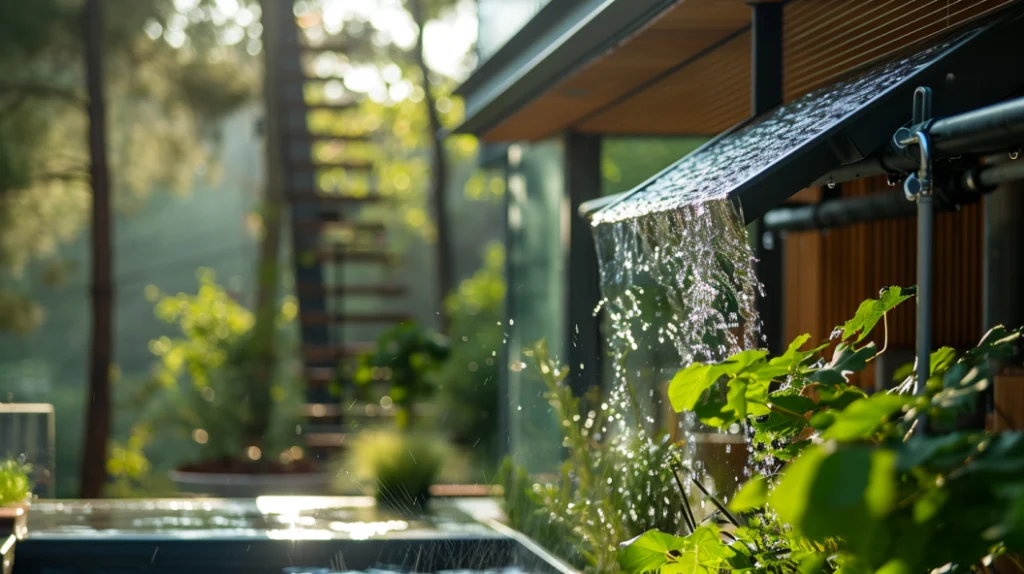
Innovative Water Conservation in Australian Homes
With Australia’s climate being predominantly arid and its regions often facing severe droughts, homeowners must adopt innovative water conservation strategies. These green living tips are not only eco-conscious but also cost-effective, allowing you to enjoy a verdant landscape while doing your part for the environment. Discover how incorporating drought-resistant landscaping and efficient irrigation systems can significantly reduce your home’s water usage.
Drought-Resistant Landscaping for Australian Sustainable Homes
Embrace the beauty of drought-resistant plants for a lush garden that requires minimal watering. These resilient species are adept at surviving in arid conditions and will keep your garden thriving with very little maintenance. Strategically chosen plant varieties and mulching can retain moisture, reducing the need for frequent watering. From native grasses to succulents, these plants can transform your outdoor space into a sustainable sanctuary.
Efficient Irrigation Systems for Australian Sustainable Homes
Trading out traditional sprinklers for efficient irrigation systems can lead to a substantial decrease in water usage. Smart irrigation technology such as drip irrigation, soaker hoses, or timed sprinkler systems ensures water is delivered directly to the roots with precision. This approach minimizes evaporation and runoff, ensuring every drop of water is used to its fullest potential. With these green living tips, your garden can flourish while you contribute to water conservation efforts.
Adopting sustainable water saving techniques is a cornerstone of eco-conscious living, essential in Australia’s quest for greener homes and a healthier planet.
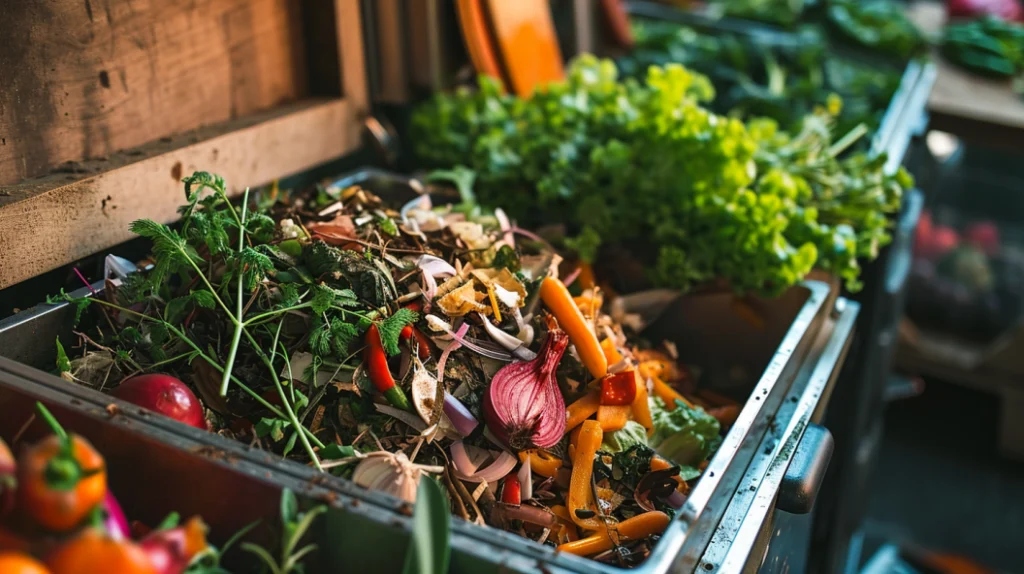
Reducing Household Waste: Composting and Recycling
As you embark on a journey towards sustainable living, one of the most impactful changes you can make is to develop responsible waste management practices. Composting and recycling are pillars of waste reduction and are essential components of sustainable living ideas. Many communities across Australia are now encouraging these activities through various programs that not only reduce landfill usage but also promote environmental consciousness. Here’s how you can play a part in this movement.
Composting your kitchen scraps and yard waste not only reduces the amount of garbage that ends up in landfills but also provides you with rich soil for your garden. Composting is a natural process that turns organic material into a nutrient-rich additive that helps plants grow, turning waste into a valuable resource. Moreover, it’s a perfect project to undertake at home, requiring minimal effort for a significant impact on the environment.
- Begin with a compost bin in your backyard or a small kitchen composter for apartment living.
- Add fruit and vegetable scraps, coffee grounds, eggshells, and grass clippings to your compost pile.
- Avoid composting meats, dairy products, and oils, which can attract pests and cause an unpleasant odor.
Recycling is another crucial aspect of reducing waste. While most are familiar with recycling common items like paper, glass, and plastic, it’s equally important to consider eco-friendly packaging when making purchases. With a focus on sustainable living ideas, you can support businesses that use biodegradable or recyclable packaging, thus further reducing your environmental footprint.
Always check your local council’s recycling guidelines to ensure proper disposal and prevent contamination of recyclables.
To provide you with actionable steps for effective waste reduction, we’ve prepared the following table to aid in distinguishing between compostable and recyclable materials:
| Compostable Material | Recyclable Material |
|---|---|
| Fruit and vegetable scraps | Paper and cardboard |
| Leaves and yard trimmings | Glass bottles and jars |
| Coffee grounds and filters | Aluminum and metal cans |
| Tea bags (non-plastic) | Plastic containers marked with recycling symbols |
| Eggshells | Electronics and batteries (at designated drop-off points) |
By incorporating composting and recycling into your daily routine, you take an active role in fostering sustainable living ideas and practicing waste reduction. Remember that every small act contributes to a larger benefit for our planet. It’s up to each of us to embrace these habits and cultivate a greener future together.
Building with the Environment in Mind: Green Materials
Constructing an Australian sustainable home is not just about creating a living space—it’s a decision that impacts both your well-being and the environment for decades. Committed to sustainability, you have the power to opt for green building materials, which bring long-lasting benefits and bolster your eco-friendly lifestyle. Let’s delve into how you can converge durability with environmental integrity in your home.
Non-Toxic and Durable Building Solutions
Beyond aesthetics, the materials you select for your home construction or remodel should create a safe habitat for you and your family. Opt for products like low-VOC paints and sealants to enhance indoor air quality. Materials such as bamboo, cork, and reclaimed wood not only offer resilience but are also renewable, ensuring that your home is a stronghold of health and sustainability. Here are some of the top choices:
- Bamboo for flooring and cabinetry
- Cork for thermal insulation and acoustics
- Reclaimed wood for structural elements and finishes
Sourcing Eco-Friendly Building Supplies
When sourcing materials, vigilance is key. Look for products boasting sustainable credentials such as the Green Star certification—a testament to their reduced environmental impact. These certifications guide you in choosing supplies that contribute to a sustainable house. Below is a handy list to keep in mind during your next home project:
| Material | Use in Home | Environmental Benefit |
|---|---|---|
| Recycled Steel | Beams, columns | Reduces mining impacts |
| Recycled Glass | Countertops, tiles | Saves landfill space |
| Linoleum | Flooring | Biodegradable, made from natural linseed oil |
Turning to environmentally friendly home tips, you can further equip yourself at Sustainable Home Magazine, a resource for eco-conscious homeowners. By choosing sustainable home tips and green building materials, not only do you construct an eco-friendly dwelling, but you also create a legacy of responsibility and care for the planet that will stand the test of time.
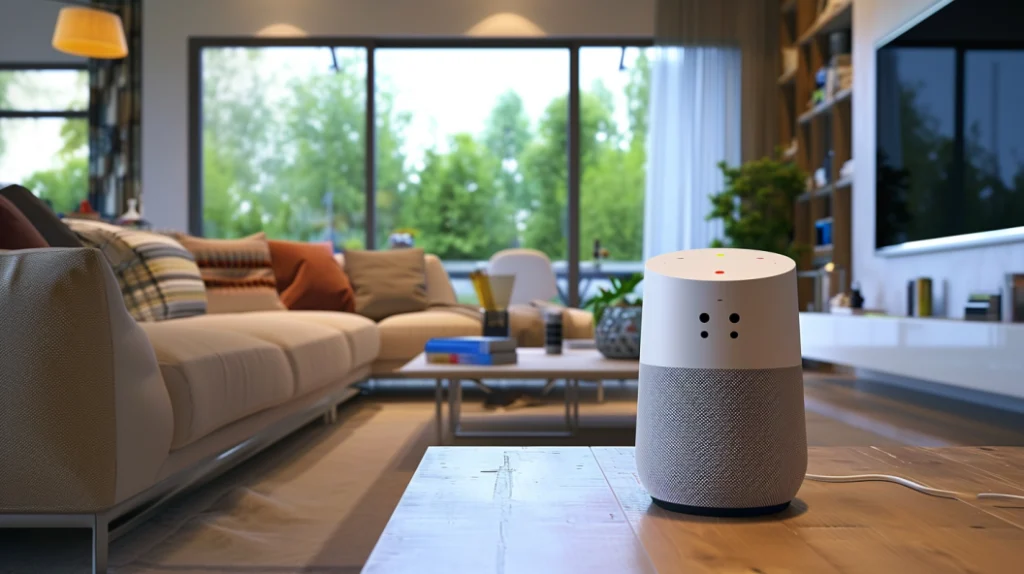
Smart Home Technology for Sustainable Living
Embracing the innovative landscape of smart home technology not only transforms your home into a hub of convenience but also paves the way for an eco-conscious lifestyle. Integrating systems such as automated thermostats and intelligent lighting can greatly enhance your home’s energy efficiency. With these advancements, you hold the power to reduce your carbon footprint while indulging in the luxury of modern living.
Energy-efficient home ideas have evolved with the advent of smart appliances that learn your habits and adjust their functions to save power. Imagine a refrigerator that knows when to defrost based on your usage patterns or a washing machine that selects the optimal amount of water and energy for your laundry load. This is not science fiction—it’s the reality of today’s eco-conscious living tips put into action.
Let’s break down some of the most popular smart home features that are changing the game in sustainability:
- Programmable thermostats that adjust to your living patterns, minimizing energy waste
- LED lighting systems that can be controlled remotely, ensuring lights are on only when needed
- Smart power strips that cut off standby power to electronics, curbing unnecessary consumption
- Energy monitors that provide real-time feedback on your power usage, encouraging mindful consumption
| Smart Device | Energy Saving Feature | Benefit |
|---|---|---|
| Smart Thermostats | Learning Schedules and Temperature Preferences | Reduces Heating and Cooling Bills |
| Intelligent Lighting | Automated Dimming and On/Off Scheduling | Extends Bulb Life and Decreases Energy Use |
| Advanced Power Strips | Eliminates Standby Power | Prevents Wasted Energy from Idle Electronics |
| Smart Irrigation Systems | Weather Forecasting and Moisture Sensing | Optimizes Water Usage for Gardening |
Remember, the key to unlocking the potential of smart home technology lies in selecting products that seamlessly integrate with your lifestyle. By doing so, you’ll make strides toward a more energy-efficient home, contributing to a sustainable future for all.
“Smart home technology is not just a luxury; it’s a step towards a responsible and efficient way of living. Let’s make smarter choices for a better tomorrow.” – Sustainable Home Magazine
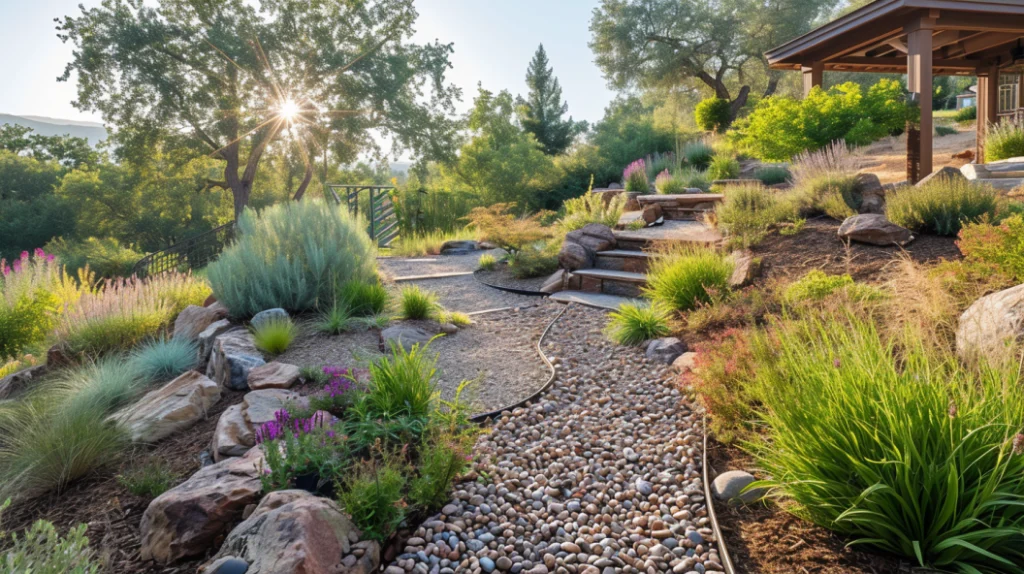
Eco-Friendly Landscaping for Australian Homes
Transforming your outdoor space into an eco-friendly oasis doesn’t just add aesthetic value to your home; it’s a powerful step toward sustainability. By choosing the right plants and fostering a natural environment, you can create a sustainable garden design that conserves resources and supports your local ecosystem. Read on to discover how you can contribute to a greener future right in your backyard.
Native Plant Selection for Water Conservation
When it comes to eco-friendly landscaping, native plant selection is a cornerstone for water conservation. Australian flora is adapted to the continent’s unique climate, meaning they require less water than non-native species. Incorporating these plants into your garden not only saves on your water bill but also reduces the strain on municipal water supply and local habitats.
- Grasses like Lomandra and Dianella provide erosion control and require minimal upkeep.
- Shrubs such as Grevillea and Banksia attract native wildlife while being drought-tolerant.
- Trees including Eucalyptus and Acacia create a habitat for birds and insects while offering shade.
Remember, a sustainable garden design is not only about plant selection. It’s about creating an ecosystem where each element complements the others, reducing the need for artificial means of maintenance.
Supporting Local Biodiversity with Australian Sustainable Homes
Beyond water conservation, eco-friendly landscaping is about embracing biodiversity. By incorporating native plants and other natural elements that attract local wildlife, your garden can become a haven for birds, bees, butterflies, and more.
- Install a bird bath or a small pond to support local bird and amphibian populations.
- Use natural pest control measures, such as attracting predator insects, instead of chemicals.
- Introduce a variety of plant species to provide year-round food and shelter for wildlife.
By taking these steps, you achieve more than just a beautiful garden; you actively participate in the preservation of your local environment. An eco-friendly landscape is a step towards a healthier planet—both for ourselves and the generations that follow.
Final Thoughts on Australian Sustainable Homes
As we’ve journeyed through a variety of sustainable Australian home tips, you’ve seen how incorporating sustainable trends is not just a noble pursuit but a practical one that reaps benefits for homeowners and the environment alike. By adopting strategies from eco-conscious living tips, you become part of a much broader movement that seeks to preserve the Earth while enhancing the quality of life. Sustainable practices in home designs, ranging from energy efficiencies to water-saving techniques, prove that every green choice counts toward shaping a brighter, more responsible future.
Whether it’s through the installation of solar panels, the integration of recycled materials, or the conservation of water – each step you take contributes to a significant collective effort. Embracing green living tips such as smart technology and waste reduction not only decreases your ecological footprint but often leads to financial savings. These practices, put into action, serve as real-world examples of how sustainable living can be effectively meshed with modern convenience.
Remember, every small change you implement in your daily routine is a stepping stone towards sustainability. The articles in Sustainable Home Magazine are not just guides; they are invitations to participate actively in the eco-conscious revolution. Your commitment to sustainable living not only uplifts your standard of living but also fosters a legacy of stewardship for generations to come. The path to a greener planet begins at home, and together, we can make each home a cornerstone in the foundation of an environmentally sound world.
FAQ
How can I incorporate passive design in my Australian sustainable home for better energy efficiency?
To incorporate passive design, focus on maximizing natural light and climate control. This could involve placing windows and shading structures strategically, insulating your home properly, and considering the orientation of your home to take advantage of seasonal changes in the sun’s position.
What are some water sustainability steps I can take in my home?
You can collect rainwater with harvesting systems, install water-efficient fixtures like low-flow shower heads and dual-flush toilets, and choose appliances that have high water efficiency ratings. Additionally, consider alterations that reduce your overall water usage, such as sustainable landscaping.
What renewable energy solutions are suitable for an Australian sustainable homes?
Solar power is a popular renewable energy solution due to Australia’s ample sunshine. Installing solar panels or solar water heaters can significantly reduce your reliance on grid electricity. If your location permits, a small wind turbine can also be a viable option for generating clean energy.
How can I integrate green spaces within my Australian sustainable home?
Introduce indoor air-purifying plants to enhance air quality and add aesthetic value. If space allows, consider installing a green roof or vertical garden to not only beautify your home but to also improve its thermal performance and biodiversity.
What are some eco-friendly decor choices I can make?
Opt for furniture and decorations made from sustainable or recycled materials. For instance, choose bamboo flooring, recycled glass tiles, or pre-loved furniture. You can also expose existing wooden structures in your home to add character and ensure better air circulation.
How can I make my home’s design more energy-efficient?
Install high-performance windows with double glazing and energy-efficient coatings to minimize heat transfer. Also, consider selecting LED lighting and Energy Star-rated appliances to reduce your home’s energy consumption.
What eco-conscious construction techniques can reduce my home’s environmental impact?
During construction or remodeling, ensure practitioners are recycling and reusing materials to minimize waste. Choose builders that employ environmentally friendly processes and source materials responsibly. Carbon offset initiatives can also be part of the construction plan to balance out any unavoidable emissions.
Why should I consider sustainable materials for my Australian sustainable homes construction?
Using sustainable materials such as certified timber or recycled steel not only lessens your environmental impact but also improves your home’s resilience and durability. Additionally, these materials often require less maintenance over time, resulting in cost savings and a reduced need for resource-intensive repairs or replacements.
Can smart home technology contribute to sustainable living?
Certainly, by employing smart home technology, you can easily monitor and manage your home’s energy consumption. Automation in heating, cooling, lighting, and appliances can optimize your usage patterns, making your home more energy-efficient and reducing your carbon footprint.
How can I make my landscaping more eco-friendly?
Choose native plants that require less water and maintenance, use mulch to retain soil moisture and reduce weed growth, and incorporate features that support local wildlife. Such eco-friendly landscaping enhances the ecological balance of your outdoor space and saves water.
What features should I consider for a pioneering sustainable home design?
Look into innovations such as solar energy systems, smart thermostats, passive solar design, or energy recovery ventilation systems. These can optimize the use of natural resources, like sunlight and air, to maintain a comfortable internal environment and reduce energy needs.
How can water conservation be innovatively addressed in Australian homes?
Adopt drought-resistant landscaping, smart irrigation systems that minimize water waste, and use soil moisture sensors to ensure plants receive the optimal amount of water. A greywater reuse system is another smart solution that recycles water from showers and sinks for garden irrigation.
What are effective ways to reduce household waste?
Composting organic waste converts food scraps into nutrient-rich soil. Recycling plastics, glass, and paper ensures these materials can be remade into new products. By choosing products with minimal and recyclable packaging, you can make a significant impact on waste reduction.
Why is it important to select green materials for building or renovating?
Green materials are often non-toxic, more durable, and manufactured with a lower environmental impact. Selecting these materials contributes to healthier indoor air quality and reduces harmful emissions during production and construction.
How does eco-friendly landscaping benefit the environment?
Utilizing native plants and providing habitats for local wildlife supports biodiversity and creates a stable ecosystem within your garden. These practices require less maintenance and water, preserving essential resources while contributing positively to the local environment.

